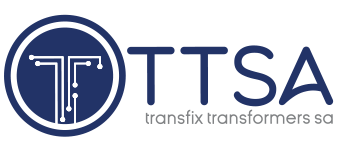As Africa looks to the future, the transition to sustainable energy represents both a challenge and an opportunity, highlights national industry support programme the National Cleaner Production Centre South Africa (NCPC-SA) skills development projects manager Dr Zenzile Rasmeni Masipa. She notes that, with its abundant renewable-energy resources, the continent has the potential to leapfrog traditional energy systems and build a future powered by clean energy.
Posts
In noting the proliferation of technologies such as AI, Big Data, the Internet of Things (IoT) and digital twins in business operations across Africa, global management consulting firm Kearney says businesses are increasingly integrating these technologies into their operations to remain globally competitive. The firm contends that cloud, social technology, Big Data and analytics, combined with advanced hardware, are driving several technological trends that have an “immense impact” on the energy industry.
Electricity and Energy Minister Dr Kgosientsho Ramokgopa says the private sector participation framework being developed for the transmission sector will be unveiled within five weeks, while announcing that it will also offer a template for other infrastructure-focused State-owned enterprises (SoEs) seeking to crowd-in private investors. In his contribution to the debate on the 2025 State of the Nation Address (SoNA), Ramokgopa emphasised the central role of infrastructure in raising South Africa’s growth to the 3% target outlined by President Cyril Ramaphosa in his earlier speech.
AI could lead to significant energy demand growth as the technology is implemented across industries, an acceleration that could also help to halve the system’s carbon intensity by 2050, according to a new report from Shell. As productivity improvements resulting from AI – including automation, especially in manufacturing – enable major economic growth, consumption of oil will continue to expand by three to five million barrels a day into the 2030s, before peaking and then declining slowly over a long period, Shell said. Natural gas demand could increase into the 2040s while the use of petrochemicals is likely to continue into the 22nd century.
Sustainable woodfibre products and solutions company Sappi’s Southern Africa business and energy trader Enpower Trading have reached financial close on a five-year 175 GWh/y renewable energy power purchase agreement (PPA). Under the terms of the PPA, which was first announced in May last year, Enpower will source power from green energy solutions provider SolarAfrica Energy’s 1 GW Sun Central 1 solar PV project, which is being built near De Aar, in the Northern Cape, and supply electricity to Sappi’s South African operations.
The Energy Council of South Africa has launched a communications campaign dubbed ‘Energise Mzansi’, which it says will seek to improve “energy transition literacy” amid rapid structural changes in the sector and ongoing supply insecurity and rising affordability risks. CEO James Mackay says that through the campaign the council aims to “connect South Africans with the factual information they need to make sense of the challenges and take advantage of the opportunities presented by the energy transition”.
The South African Nuclear Energy Corporation (Necsa) says it is “deeply saddened” by the passing of board member Senamile Masango on February 8. Masango was a Necsa board member since January 2020. She was part of the board which oversaw the development and implementation of the Necsa turnaround strategy that was approved in 2021.
South Africa’s State-owned Transnet National Ports Authority (TNPA) has signed a 25-year terminal operator agreement with Zululand Energy Terminals (ZET) for the development of the country’s first liquefied natural gas (LNG) import terminal at the Port of Richards Bay’s South Dunes precinct. ZET is a JV between Vopak Terminal Durban and Transnet Pipelines, which was selected in 2024 as the preferred bidder to develop, construct and operate a new LNG terminal at the deepwater KwaZulu-Natal port.
President Cyril Ramaphosa’s State of the Nation Address (SoNA), delivered on February 6, has been met with cautious optimism. The Bureau of Economic Research (BER) commended the SoNA’s focus on the Medium-Term Development Plan (MTDP), which aims to boost economic growth to over 3% through large-scale infrastructure investment.
President Cyril Ramaphosa’s State of the Nation Address (SoNA), delivered on February 6, has been met with cautious optimism. The Bureau of Economic Research (BER) commended the SoNA’s focus on the Medium-Term Development Plan (MTDP), which aims to boost economic growth to over 3% through large-scale infrastructure investment.
INDUSTRY NEWS
- Eskom offers more details on envisaged roles of the NTCSA and the TSODecember 18, 2025 - 11:04 am
- NTCSA says any electricity deal to salvage Mozal must ensure its financial sustainabilityDecember 17, 2025 - 3:01 pm
- ENGIE expects to start construction of 240 MW Corona PV project in late 2026December 17, 2025 - 1:04 pm
WHERE TO FIND US
Address
9 Yellow Street
Botshabelo Industrial Area
Botshabelo, Free State
Call / Email Us
Tel: +27 (0) 61 956 6772
Email: info@transfix.co.za
